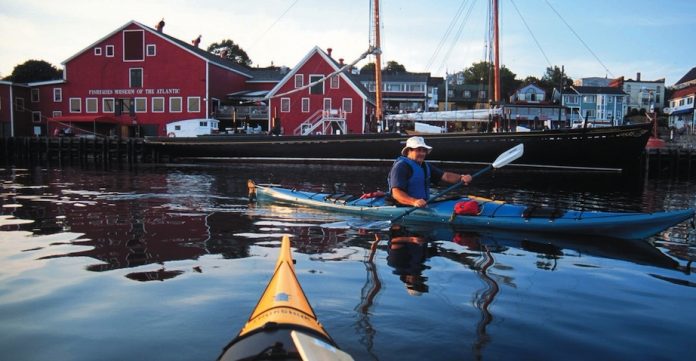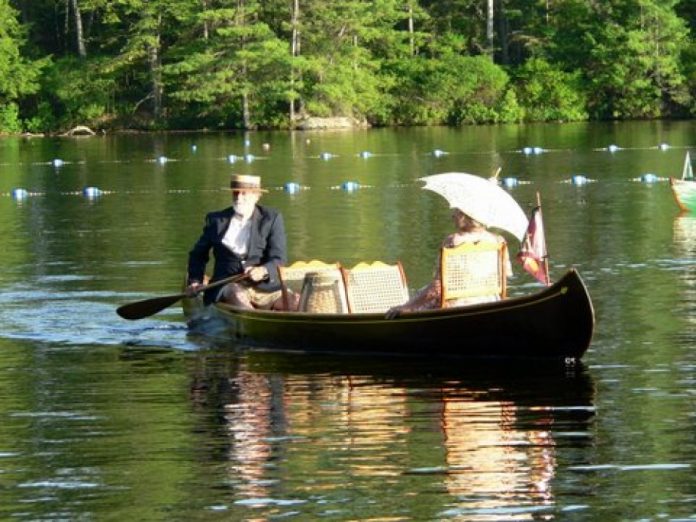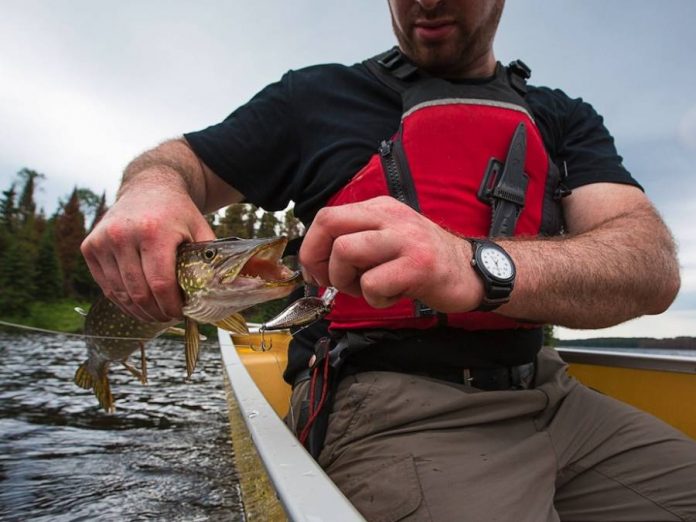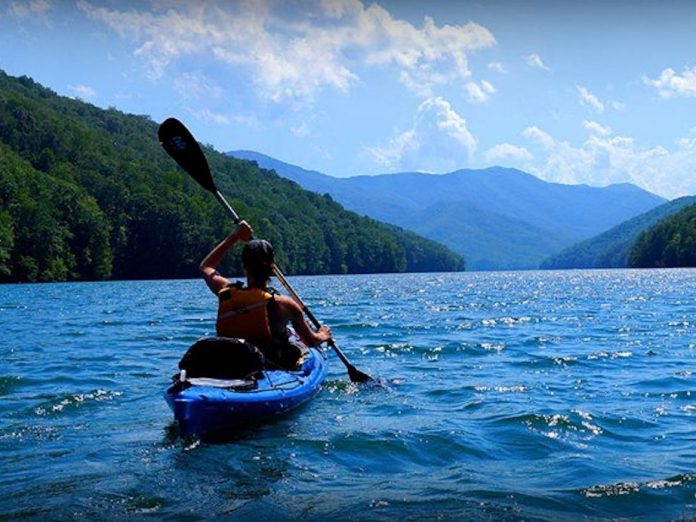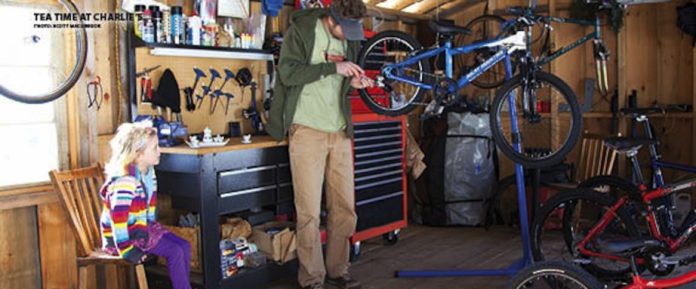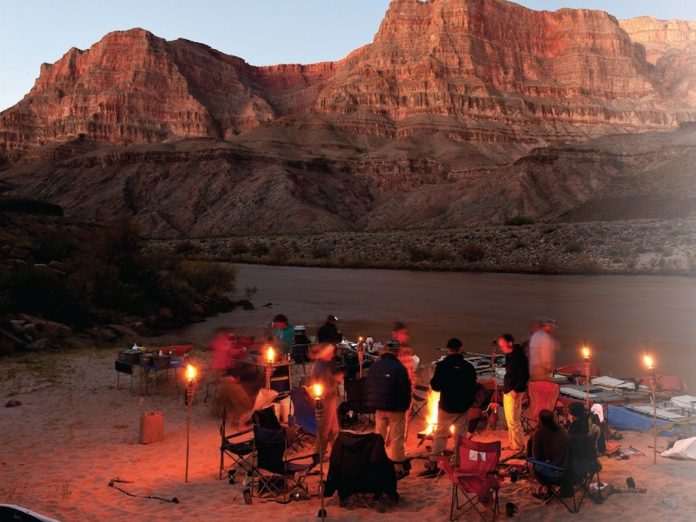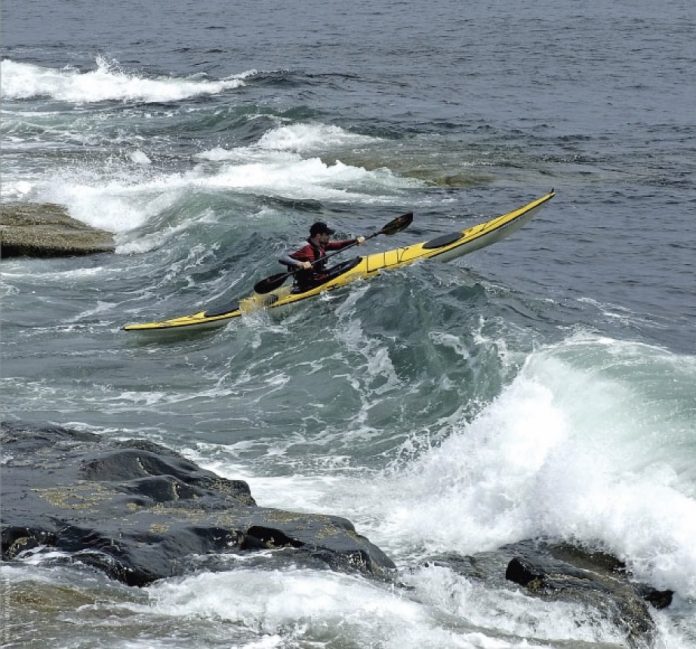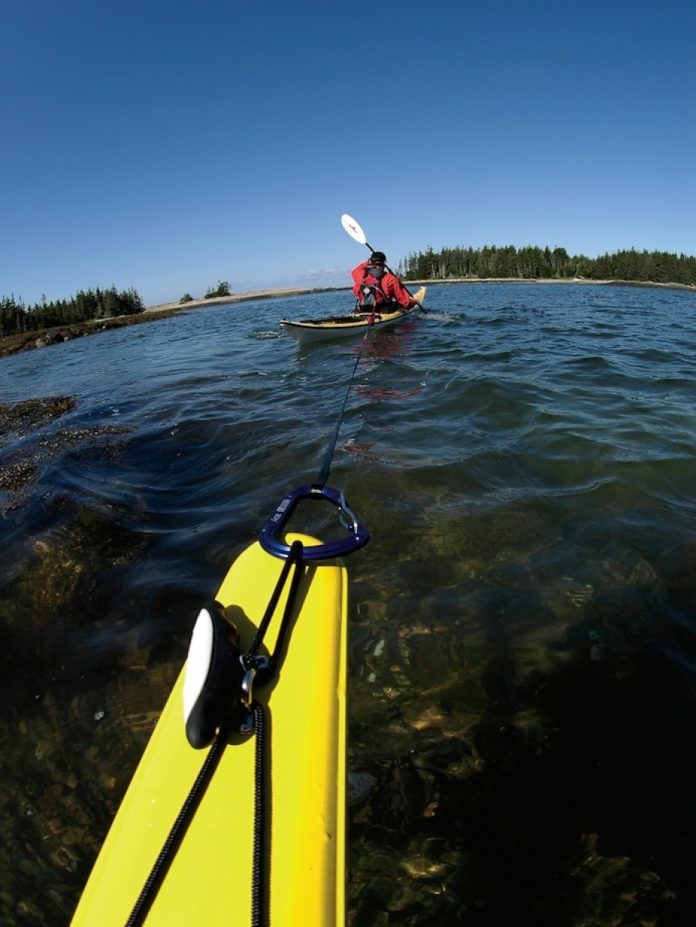Settled in 1753 and declared a UNESCO World Heritage Site in 1995, Old Town Lunenburg is an outstanding example of early British Colonial settlement in North America. For kayakers, the colourful seaside town has added significance as a gateway to some of the most picturesque and accessible sea kayaking in the Maritimes. It is the start/finish point of the new Nova Scotia Water Trail route to Halifax, and a convenient base for shorter forays.
Kayaking the historic boundary of Lunenburg’s harbour is a grand way to combine heritage, adventure and nature observation in a short trip. For a full-day trip, you can put in at the public access at the east end of the Fisheries Museum parking lot. Use caution as you depart, as this is a working port with fishing and sailing vessels of all types on the move. The law of gross tonnage applies here and sea kayaks are low on the food chain.
Paddling southeast out of the harbour, you will pass the boatyards where many of the famed sailing schooners were built, not the least of which were the Bluenose and the Bluenose II.
Rounding Battery Point you head into the outer harbour. A four-kilometre paddle along the shore past landmarks such as Front Rum Point, Meisners Reef and Red Head takes you to the scenic community of Blue Rocks. This is one of the few remaining villages in Nova Scotia that retains the individual fishermen’s wharves, which were widely replaced by communal government wharves in the late 1940s and ‘50s.
Plenty of lunch spots and exploring possibilities are available in this area. Birdwatchers will find many species to keep them entertained. You’re also likely to spot seals and harbour porpoises.
Your return trip can take a couple of different routes. Retracing your morning paddle brings you back into the Inner Harbour via Battery Point for a spectacular view of the town. A more adventurous option if the weather remains favourable would be to cross the bay and head west-southwest to the opposite shore. The return paddle here takes you along the western shore, past Masons Point, Puffycup Cove and around Kaulback Point. You can wind your way deep into the Inner Harbour amongst the myriad of sailboats at anchor and return to the slipway at your leisure.
The entire loop is about 20 kilometres, depending at what angle you cross the bay. An abbreviated half-day version would see you proceeding to Battery Point, crossing to Masons Point (watch for boat traffic) and returning along the western shore. This is just one of the innumerable paddling options in this scenic area.
Off the water, be sure to sample the host of après paddle options. A cruise, a carriage tour, a visit to the museum or a chat with the friendly locals before or after you paddle will surely teach you more about what you see from the seat of your kayak. And by the time you’re done, you should have worked up an appetite for a big lobster feast.
How to get there
Take the Lighthouse Route, Highway 103, into Lunenburg and follow signs for the Fisheries Museum. The public access slipway is at the east end of the parking lot behind the Star Charters reservations building.
This article originally appeared in Adventure Kayak, Early Summer 2004. Download our free iPad/iPhone/iPod Touch App or Android App or read it here.



